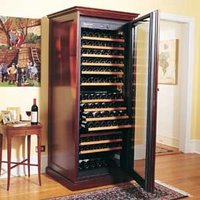Beer is good too!
I have a subscription to Bottom Line's Daily Health News. I scan my daily messages to see if there's any developments or ideas in the health field that's interesting for me.
Today they have one section titled, Raise a Glass to Beer. I have copied that section for those of you who are fans of beer as well as wine drinkers:
Raise a Glass to Beer
Beer drinkers tend to get the short end of the stick. While wine connoisseurs are thought of as chic and sophisticated, beer drinkers are routinely portrayed as slothful, pot-bellied creatures planted in front of TVs. In one memorable news exposé several summers ago, beer drinkers on working-class Rockaway Beach in New York City were arrested (no open containers please), while the mayor sat comfortably ensconced among wine sippers at a philharmonic orchestra concert in Central Park.
But now there's good news for beer drinkers -- it turns out that by and large alcohol is alcohol, and socioeconomic stereotypes aside, the health benefits of beer are not all that different from the benefits of wine. Of course the key word here is moderation -- most experts advise no more than two alcoholic beverages a day for men and no more than one for women. So what's so good about beer?
HERE'S TO YOUR HEALTH
An increasing body of serious research backs up beer's benefits...Bone protection. According to a medical team at Tufts University in Boston, beer may help prevent bone-thinning osteoporosis. Dietary silicon in grain products such as beer appears to reduce bone loss and promote bone formation. Beer contains silicate, a highly absorbable form of silicon that works by facilitating the deposit of calcium and other minerals in bone tissue.
Margo A. Denke, MD, clinical professor of medicine at the University of Texas Health Science Center, cautions that excessive alcohol intake is a risk factor for bad bones, perhaps because calories from nutrient sources are replaced with calories from alcohol.Lower risk for cardiovascular disease. Like wine, beer has well-documented heart-healthy benefits. Regular moderate drinking has a protective effect in both men and women against cardiovascular disease, confirms Meir J. Stampfer, MD, DrPH, chair of the department of epidemiology at the Harvard School of Public Health. He told me that moderate alcohol consumption in any form has an equivalent benefit -- "Wine is not better than beer, red wine is not better than white and spirits in moderation are also associated with lower risk."
Better heart attack survival. A study at Beth Israel Deaconess Medical Center in Boston noted that moderate drinkers (who consumed more than seven alcoholic beverages a week) had a 32% lower risk of dying from a heart attack than those who drank no alcohol. Light drinkers (less than seven drinks weekly) had a 21% lower risk. Like other alcohol, beer acts as a blood thinner to help prevent clogged arteries. Other research links moderate alcohol consumption with improved blood circulation in the brain and lower risk for stroke.
Improved cholesterol levels. In her research, Dr. Denke discovered that people who consumed one to three drinks daily had higher levels of HDL, the "good" cholesterol. She also found that regular moderate intake of alcohol resulted in lower blood insulin levels. In a related US Department of Agriculture (USDA) study, women who drank one alcoholic beverage daily lowered their LDL ("bad") cholesterol and levels of harmful blood lipids known as triglycerides.
Sharper brains. In the long-term Nurses' Health Study, Dr. Stampfer and his colleagues found that moderate consumption of alcohol seemed to preserve the mental abilities of older women. From 1995 to 1999, more than 9,000 women between ages 70 and 79 were interviewed regarding their alcohol use, and seven different tests of mental function were administered. Moderate drinkers scored better on five of seven tests, and on total overall scores.
Healthier kidneys. At Harvard Medical School, Tobias Kurth, MD, ScD, assistant professor of medicine, and his colleagues examined data from 11,023 men enrolled in the long-term physicians' Health Study. Over a period of 14 years, the participants reported their alcohol consumption and underwent regular physical exams and blood tests. Researchers found that men who consumed seven or more drinks a week experienced a 29% lower risk of developing kidney problems. (Read more about this study in Daily Health News, January 17, 2006.)
Antioxidant effect. Japanese scientists have found that antioxidants such as polyphenols in beer may offer protection against cancer-causing chemicals. This echoes earlier research conducted in Portugal, which suggested that antioxidants slow the proliferation of breast cancer cells. According to Dr. Denke, isoflavonoids in beer are phytoestrogens that mimic the activity of the natural human hormone estrogen. In laboratory experiments, isoflavonoids have also been shown to inhibit the growth of breast, prostate and colon cancers.
PROCEED WITH CAUTION
Promising as all this research appears, talking about alcohol always requires special caution. It's all too easy to slip over the line from healthful consumption to overconsumption and physical damage, warns Dr. Denke. Yes, regular moderate consumption can benefit the heart, kidneys, bones and more... but by the same token, drinking too much alcohol can seriously harm vital organs and processes in the body.
While we all think of beer as having more than its fair share of calories, in fact it is not significantly higher than other forms of alcohol. As always, moderation in all things is the best path to follow.
Copyright © 2006 by Boardroom Inc.







 Wine drinkers are no longer snobbish about their wines, as long as the quality is preserved. That could be in a bottle, in a box, corked or with a screw top.
Wine drinkers are no longer snobbish about their wines, as long as the quality is preserved. That could be in a bottle, in a box, corked or with a screw top.


